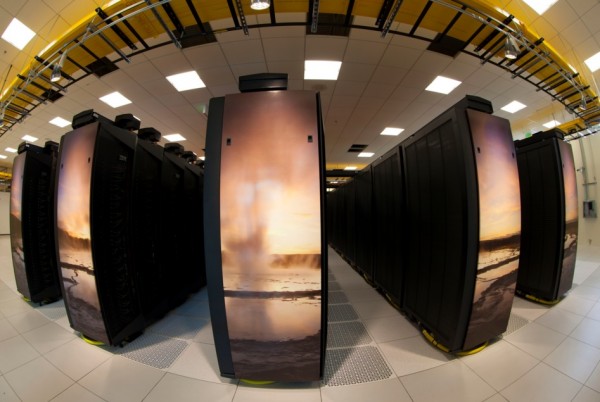By Ana Verayo, | January 12, 2016

A fish-eye view of some of the Yellowstone supercomputer's 100 racks.
Scientists have been relying on the Yellowstone supercomputer located in Wyoming that is housed under the National Center for Atmospheric Research (NCAR) for accurate climate models of the planet since 2012. However, this will be replaced by a more powerful climate computer next year that will be known as Cheyenne.
Like Us on Facebook
According to the NCAR, Cheyenne will be installed later this year, at the NCAR-Wyoming Supercomputing Center which is slated to be 2.5 times more powerful than the old Yellowstone. The center also adds that this will now allow scientists to gain more understanding from unprecedented level of detail during predictions involving climate change.
According to Anke Kamrath who is the director of operations and services of NCAR's Computational and Information Systems Laboratory, the team is excited to bring more supercomputing power to the scientific community. This new system can lead to more improved predictions to strengthen communities' resilience against potential disasters such as solar storms or severe weather events.
Cheyenne will gain power from its Intel Xeon processor that has the capacity to perform 5.3 quadrillion calculations for every second, which is about 100,000 times faster than a regular home computer, with a colossal 313 terabytes of memory storage.
NCAR also reveals that with this immense amount of power, Cheyenne will also be three times more energy efficient than the older model.
Apart from allowing scientists to simulate more complex climate patterns, this new supercomputer can also generate high resolution models from solar radiation from the sun that can lead to improving solar power utilities to predict the amount of solar energy that solar arrays can generate, within days in advance.
Cheyenne can also accurately generate solar flare forecasts, that can potentially endanger communications satellites and astronauts in lower Earth orbit.
According to NCAR Director James Hurrell, Cheyenne will be a major component to the United State's research infrastructure with its powerful supercomputing ability that can greatly contribute to geospace and atmospheric sciences. He adds that the new capabilities of this system will focus on the continuing improvement of the ability to understand the weather, climate and air quality of the planet including space weather and to predict significant impacts on communities, ecosystems and society.
-
Use of Coronavirus Pandemic Drones Raises Privacy Concerns: Drones Spread Fear, Local Officials Say

-
Coronavirus Hampers The Delivery Of Lockheed Martin F-35 Stealth Fighters For 2020

-
Instagram Speeds Up Plans to Add Account Memorialization Feature Due to COVID-19 Deaths

-
NASA: Perseverance Plans to Bring 'Mars Rock' to Earth in 2031

-
600 Dead And 3,000 In The Hospital as Iranians Believed Drinking High-Concentrations of Alcohol Can Cure The Coronavirus

-
600 Dead And 3,000 In The Hospital as Iranians Believed Drinking High-Concentrations of Alcohol Can Cure The Coronavirus

-
COVID-19: Doctors, Nurses Use Virtual Reality to Learn New Skills in Treating Coronavirus Patients







